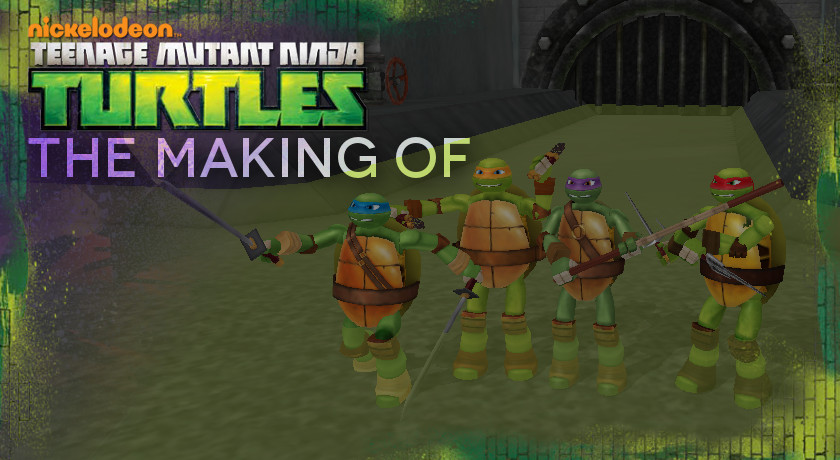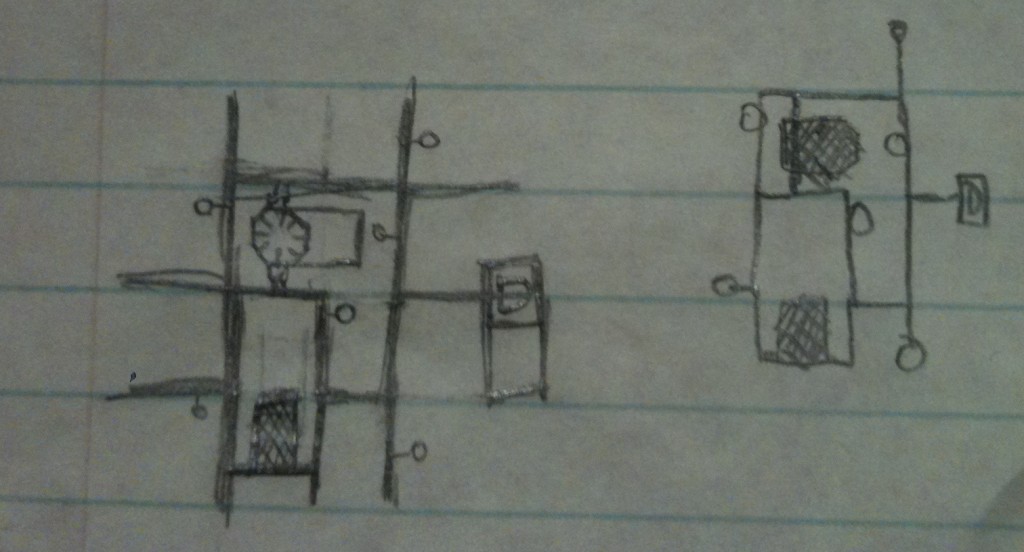Blog Archive
The Making of Teenage Mutant Ninja Turtles: Turtle Trouble
by Andrew Haak
Archive News
 The ROBLOX Content team recently put the finishing touches on its latest game, Teenage Mutant Ninja Turtles: Turtle Trouble, as part of an advertising deal with Nickelodeon. At the time of this writing, users have played the game almost 300,000 times and it continues to sit atop the Games page – a testament to the collective effort the team poured into its development.
The ROBLOX Content team recently put the finishing touches on its latest game, Teenage Mutant Ninja Turtles: Turtle Trouble, as part of an advertising deal with Nickelodeon. At the time of this writing, users have played the game almost 300,000 times and it continues to sit atop the Games page – a testament to the collective effort the team poured into its development.
The Content team set out to create a game that felt like part of the Teenage Mutant Ninja Turtles now-CGI universe – a far cry from ROBLOX’s traditional, blocky look. That required pushing the engine with advanced combat, character models and animations, enemy artificial intelligence (AI), and level design. Content Team Lead Deepak Chandrasekaran (Sorcus) encouraged the developers to critique one another’s work, and bring standard ROBLOX elements to a new level in a cohesive experience.
When games are cohesive and feel intuitive, you don’t find yourself asking too many questions — such as, “What am I supposed to do in this game?” — as you play. Eliminating those types of questions was the Content team’s overarching goal.
Character animation
Turtle Trouble’s character animations are based on the 14-joint animation system we developed for LEGO: Hero Factory Breakout, but it wasn’t as simple as replacing LEGO characters with Ninja Turtles. The existing running animation, for example, looked too robotic, so Visual Artist Tara Byars researched “run cycles” to get a feel for the key poses of human running. She ended up with 15 poses, each of which she key-framed using an internal animation plugin for ROBLOX Studio, and leveraged a standard capability known as inbetweening (or “tweening”) to fill the gaps between poses.
Each playable character in Turtle Trouble has a unique weapon and personality, meaning each has a custom weapon-equip and weapon-strike animation. What’s interesting here is that we used three levels of animation to mix movements. While your character’s lower half is running, you can equip, hold and attack using your torso; similarly, you can equip weapons while you’re jumping. This little feature goes a long way in smoothing the play experience.
Combat and Artificial Intelligence
Turtle Trouble’s hand-to-hand combat is interesting for a couple reasons. First, it introduces a move that’s never been seen before in ROBLOX: the tumbling roll (you can execute it by double-tapping in any direction). Developed by Game Engineer Tyler Mullen (HotThoth), the move helps players evade large numbers of foot soldiers, and really puts the “Ninja” in Ninja Turtles. Second, each playable character has unique weapons, seemingly giving those with long range the advantage. In order to maintain the balance of the game, Tyler tweaked weapon damages: the shorter the range, the more damage done. While short-range weapons do more damage, you’re more exposed to damage.
The combat is made more interesting via the enemies’ artificial intelligence, which actually increases every round. The further you survive, the nimbler the foot soldiers become; eventually, they even start dodging. They were also built to disperse, meaning their AI tells them to manage multiple enemies instead of piling on one unfortunate turtle. Mullen wanted to action to be frenzied, even when multiple players were involved.
Turtle Trouble culminates with a “boss fight” between Shredder and the Turtles. Tyler likened the battle to those in the Megaman series.
If you’ve ever played a Megaman game, you know every boss acts out of repetition. The key to victory is learning patterns. Shredder’s AI was implemented in a similar fashion – his attacks, whether a rushing charge, a flurry of shurikens, or summoning foot soldiers – are part of a pattern. Each of the attacks was designed to react to differing combat scenarios. If Shredder is surrounded, he throws the shurikens. If it’s one on one, he charges.
The most fun part, according to Tyler, was Shredder’s defeat. He doesn’t simply lie down when you beat him; he begins floating in the air, then explodes.
Level design
In Turtle Trouble, there’s a similar amount of detail packed into very different-sized spaces. The small training dojo, where players initially spawn, is loaded with accoutrements, such as punching bags, fancy rugs and weapon racks. The city streets, on the other hand, are comparatively sparse. One quality that makes the game’s level design successful is you don’t really notice the disparity as you move from environment to environment.
[do action=”youtube-iframe” videoid=”C52v_sUy13w”/]
Starting with just a reference image of the training dojo, Content Engineer Luke Weber (or stickmasterluke) built out a network of sewer tunnels using a Tic-Tac-Toe-like grid. He removed a section here, added a combat arena there, until there was balance, room for action and a reason to visit each corner. At the same time, he placed manholes, which lead you to the city proper. Luke initially carved the city out of a hilly piece of terrain. While it worked, it left a grassy exterior that killed the sense of place. As a fix, he created walls that look like city buildings and added tunnels that create the appearance of streets running into the distance.
There are three distinct environments in Turtle Trouble: dojo, sewers and city. They’re built using building elements that usually contrast: terrain and parts. Still, the entire game looks cohesive because Luke stuck to a unified color palette – in terms of materials, you’ll see a lot of granite, gravel and cement.
Little Details
Strewn about Turtle Trouble are little details that add extra interactivity to the game. Trash cans dent if you hit them. Hit trees and leaves will fall. The potions in the dojo break and the punching bags move when struck. Knock off vent covers and they’ll spray steam. You can pick up special weapons, and each one has a unique motion and effect associated with it.
As mentioned at the front end of this article, Turtle Trouble was a collective development effort. It pushes ROBLOX’s engine further than most — if any — games ever have. Still, there are design, development and interactivity techniques you can take as inspiration.
You can play Turtle Trouble on ROBLOX right here.
Alan Fackler contributed reporting to this story.


